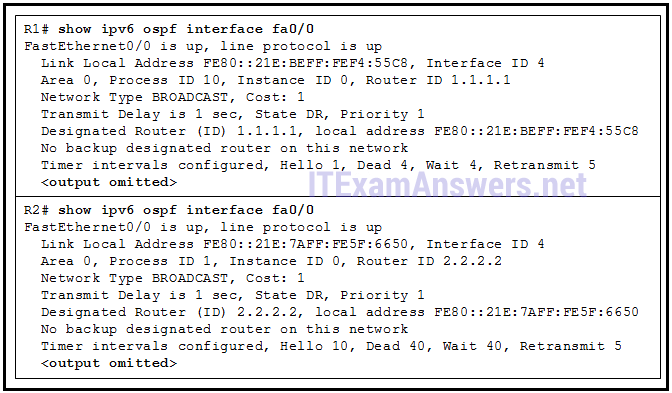Refer to the exhibit. R1 and R2 are connected to the same LAN segment and are configured to run OSPFv3. They are not forming a neighbor adjacency. What is the cause of the problem?

- The IPv6 addresses of R1 and R2 are not in the same subnet.
- The priority value of both R1 and R2 is 1.
- The timer intervals of R1 and R2 do not match.
- The OSPFv3 process IDs of R1 and R2 are different.
Explanation: There is a mismatch between the timer intervals of R1 and R2. In OSPF the timers must match on two routers before they will become neighbors. The IPv6 addresses that are used by OSPFv3 are link-local, and are in the same subnet. The OSPFv3 process ID is locally significant, and does not have to match between routers. The default OSPF interface priority value is 1, and does not prevent neighbor relationships from forming.
Exam with this question: CCNA 3 (v5.0.3 + v6.0) Chapter 10 Exam Answers
Exam with this question: CCNP ENARSI v8 Final Exam Answers
Exam with this question: CCNA (ICND2) Cert Practice Exam
Please login or Register to submit your answer
